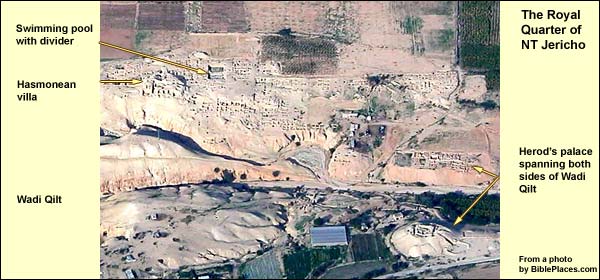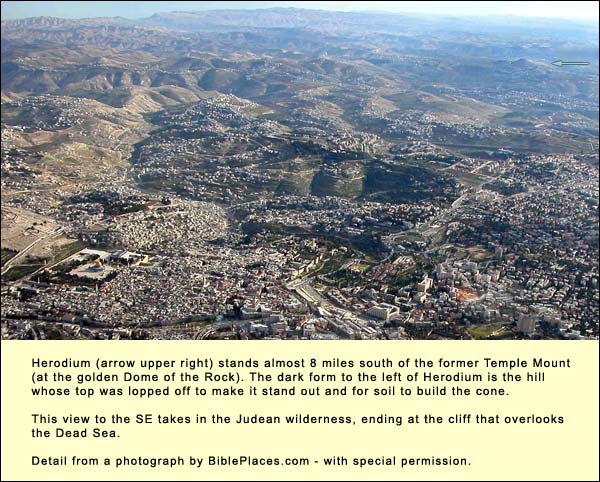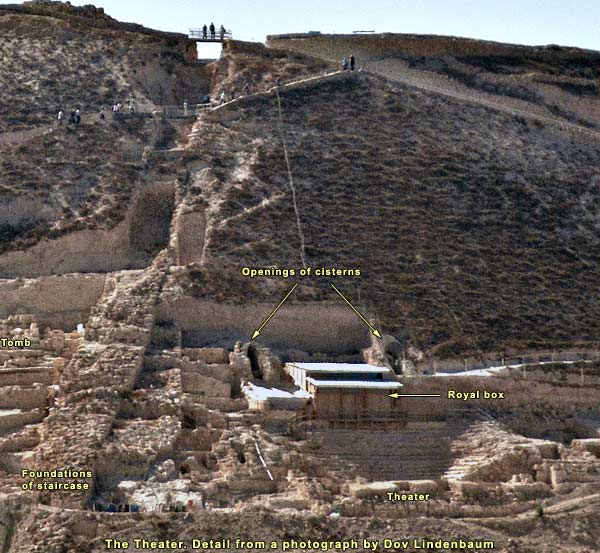Israel Museum
{mospagebreak title=Shrine of the Book}
Shrine of the Book
As we approach the Israel Museum, the Shrine of the Book appears at once. Its white-tiled dome is shaped like the top of the first jar in which the Dead Sea Scrolls were found. Opposite stands a wall of black stone. The contrast suggests the strong dualism of the Scrolls, one of which has been dubbed by scholars "The War of the Children of Light Against the Children of Darkness."

The building is constructed like a cave: we go into a narrow hall, where we see items from Qumran. At its end, on both sides, are two of the first jars in which the scrolls were discovered. Then we enter the circular hall beneath the dome. Around a drum in the center is a modern copy of Isaiah, complete. All the scrolls on the sides of the hall are selected from the actual ones that were found. They are made of fine lambskin, scraped and cut and sewn together. After etching guidelines, the scribe hung his letters from them. Because light damages the parchment, the staff alternates the examples frequently. On the significance of these scrolls and the group that made them, see the following: Qumran (Introduction) Essenes The Scrolls and the Bible Qumran as a site The Shrine usually includes parts of the following scrolls in its display: The Manual of Discipline (or Community Rule). This is the rule book of the group (probably the Essenes). The text contains many emendations. The War of the Children of Light against the Children of Darkness. Although the scroll has been eaten here and there, the writing is very fine. The Temple Scroll. This was the longest found - 27 feet. It is also the best preserved. The community must have regarded it as sacred, for here God speaks in the first person, giving instructions about the proper way in which His Temple should be built. Isaiah. Many exemplars from this prophet were found, including the complete book. Often the Shrine will show the transition from Isaiah 39 to 40, which some scholars take as the transition from a first to a second Isaiah. In the scroll there is no distinguishing mark or break. {mospagebreak title=Model: Jerusalem, 66 AD} Model: Jerusalem, 66 AD This outdoor model offers a hypothesis as to how Jerusalem may have looked just before the first revolt against Rome. The scale is 1:50. Architect Hava Avi-Yonah and her archaeologist husband Michael completed it between 1961 and 1967, before the intensive period of archaeology in Jerusalem. Much, therefore, is based on texts alone (especially JosephusJosephus Flavius (36 – 100 AD), Jewish general, one of two directing the revolt against Rome in Galilee. After Vespasian captured him, he prophesied the latter would be emperor. When this proved true, the Romans honored him. He then turned historian, writing The Jewish War, The Antiquities of the Jews and many other books. Because of a paragraph about John the Baptist (and maybe a sentence about Jesus), the Church preserved his works. and the Mishnah). A great deal is sheer speculation. Yet the overall effect is dramatic, jumpstarting the imagination and providing a basis for discussion. As preparation for the revolt, the Jews completed a third city wall to the north of the present Damascus Gate. Its course is unknown. By including a third wall, the Avi-Yonahs have represented a city much larger than the one Jesus knew. For example, an outcropping of rock on the west side (north of the three Herodian towers) represents the rock of Golgotha, where the Church of the Holy Sepulcher stands today. It is inside the third wall, which is west of it. When Jesus was crucified, the city wall was the one we see to its east.
{mospagebreak title=Herod the Great: A special exhibit}
Herod the Great: A special exhibit
Logistics: This extraordinary exhibit will continue until Oct. 5, 2013. There is no extra cost beyond the regular Museum admission fee (which includes the Dead Sea Scrolls and the Model). Groups should arrange their visits in advance. Those with fixed itineraries may take advantage of the museum's special Tuesday hours: 16:00 – 21:00. Figure an hour for the exhibit, but it is good to leave another hour at least for the main archaeological section, which is awe-inspiring. Audioguides are available, free of charge—with excellent coverage by the exhibit's curators, Silvia Rozenberg and David Mevorah. There are explanations in Hebrew and English, but, oddly, not in Arabic.
Herod (posthumously called the Great because of his construction projects) was surely one of the most splendid, wicked, and miserable creatures ever to walk the earth. The new exhibit at the Israel Museum conveys the splendor (we visitors may add in the wickedness and misery). It took three years to put together, and the stones of the reconstructed tomb are so heavy (for they are the actual stones, transported from Herodium) that the museum had to strengthen the building's foundations before receiving them. All this for a show lasting just eight months! It almost "out-Herods Herod."
Below I review the exhibit. You can take a virtual tour of it with the curators, and see images of many of the items I mention, here.
The exhibit takes as its theme "The King's Last Journey" qua corpse from Jericho to Herodium. There is a series of halls, large and small. First comes the putative throne room from his final palace at Jericho. This is a good example of the difference it makes to have a reading of JosephusJosephus Flavius (36-100 AD), Jewish general, one of two directing the revolt against Rome in Galilee. After Vespasian captured him, he prophesied the latter would be emperor. When this proved true, the Romans honored him. He then turned historian, writing The Jewish War, The Antiquities of the Jews and many other books. Because of a paragraph about John the Baptist and a sentence about Jesus, the Church preserved his works. under one's belt. Standing here, we can recall the room at the Jericho palace, perhaps this one, where the 69-year-old Herod attempted suicide in order to escape the carnal torments described by Josephus, who took obvious delight in listing them (a full-body itch, genital-devouring worms—the symptoms go on for a drooling paragraph). A loyal servant cried out and grabbed Herod's arm, stopping him in the act. His oldest son Antipater, imprisoned nearby for plotting to poison him, interpreted the servant's screech to mean that his father was dead. He shouted with joy, "Let me out! I'm king now!" (or something to that effect). Hearing this, Herod had the young man executed. It was the third son he had treated in such a fashion. The first two were his by the beautiful Mariamne, the woman who gave his life meaning—and whom he'd also had executed. The present room, with frescoes of red pigment (cinnabar) quarried in Spain, takes on added value when we recall the family gore. The next hall contains what for me is the exhibit's pièce de résistance: the royal bathtub from Kypros (a fortress overlooking Jericho). It is much bigger than the bathtubs we know from Masada. The stone has remarkable patterns. Weighing more than a ton, it was quarried as a single block from a stalactite cave (!). But the reason it impresses me so is that with a little imagination, you can see the king sitting in it, taking his bath. It is about as close to the man as you may wish to get. He named Kypros after his mother, a Nabataean. His father was an Idumaean (Edomite), whose own father had been pressured into conversion by the Hasmoneans.Family of Judah Maccabee ("the hammer") and his brothers, who revolted successfully against the Greek Empire in 167 BC. They ruled until 63 BC. Because of his parentage, Herod's subjects barely thought of him as Jewish, if at all, and in this fact we may locate the ultimate cause of his misery. This story began when he yielded to the pressures of Mariamne and appoint her brother as High Priest. She and her brother were Hasmoneans—that is, they were part of the extended royal-priestly family from which Herod had wrested power. His subjects adored this new, fully Jewish High Priest, and the king felt threatened. He had the young man drowned, therefore, in the pool at Jericho. This murder engendered a series of events which included the execution of Mariamne and, decades later, that of her two sons. The exhibit shows us the notorious pool (see the image below) in the complex of the Jericho palaces, using an animated video which starts from a photo of the excavations and reconstructs the original in stages. There are similar animated videos for Herod's structures in Jerusalem, Masada, Caesarea, and Herodium. They are breathtaking.

Except for some exquisite carvings in limestone, I did not find much in the exhibit's coverage of the Temple—but for this we have plenty at the Ophel excavations. There is a long case displaying vessels in which Herod's wine was imported from the best Italian vineyards—the name of the vineyard and the year are inscribed, as well as Herod as purchaser. There are also vessels for apples from Cumae and Spanish garum (a sauce made by fermenting fish and herbs in vinegar or salt). Curator David Mevorah points out that these imports had political importance: in order to negotiate on an equal footing with foreign emissaries, Herod had to be able to wine and dine them at the level they knew in Rome or wherever they hailed from. A corridor is dedicated to Herod's Roman connections. Here too one can plug in Josephus: how before the sea battle of Actium in 31 BC, Herod had backed Marc Antony, and how after Antony's defeat he was able to switch sides, persuading Octavian (the future Augustus) to accept him as ally and friend. Herod and Octavian made a trio with Marcus Agrippa, whose magnificent bronze portrait is shown. (It was Agrippa who conducted the battle for Octavian at Actium—more about which later.) The hall contains a reconstructed basin of marble, a rare import at the time; it has carvings of SileniElderly rustic spirits who followed Dionysus just below the rim and legs whose feet are lions' heads—for Herod an unusual violation of the ban on images. The next hall offers a short film on Ehud Netzer's career-long search for Herod's tomb, which Josephus had described as being at Herodium. The whole exhibit is dedicated to Netzer's memory: in the midst of helping to plan it, he fell to his death at the site. I dug under his direction there in 1981. Netzer thought he would find the tomb in the lower city. I remember him pointing from above to a long causeway that ended in an ornate building; the complex seemed created for a funeral procession —yet no burial chamber turned up. The discovery waited until 2007, when he found it instead on the hill's northern slope - not the rock-cut tomb he'd expected, rather the remains of a built structure. (It seems to have been similar in design to the misnomered Absalom's Monument, which is about two-thirds of the size.) According to the film's account, the causeway was indeed meant for the funeral, but the king changed his mind. He had the tomb built where the Jerusalemites would see it from the heights around their city eight miles away. (Why not put it on top of Herodium? Because then it would have been in the living quarters, making them ritually impure.) The film does not explore why Herod chose this area in the first place, but we may surmise the reason from the fact that many years earlier, at the start of his struggle for power, he had narrowly escaped death here, snatching victory from the jaws of defeat.

I have already used the term "breathtaking," but it applies to the next hall too. Perhaps a decade before building the tomb, Herod had set a small theater into the slope. It seated 300 people. Above the audience section he placed a hall - a huge theater box, if you will - for entertaining his guests. From here too one could watch the show. On erecting his tomb, however, he wanted it to stand out against the background, and so he had thousands of tons of earth and gravel poured over everything nearby, including the entertainment hall, the theater, storerooms, and villas. According to Mevorah, it was this act that gave Herodium its conical shape. Because part of the theater box would have jutted above the desired slope, Herod had it trimmed to fit. The untrimmed remainder was preserved by the earthen covering to a height of fifteen feet.

For an internal view of the actual theater "box," see here. The museum personnel have been able to reconstruct the three walls of this stunning chamber on a somewhat smaller scale. At the base all around are frescoes alternating crimson with coral pink. There are delicate stucco pilasters of pink and cerulean, with a white acanthus pattern running up to the upper frieze, also patterned and colored. On opposing walls are paintings in the seccoA technique for painting on dry plaster, less durable than buon fresco, where the painting is done when the plaster is still wet (fresh) and so becomes part of the wall. technique resembling windows, complete with shutters - but each is "hung" by a "string" from a "nail." Looking "through" one of these, we see a sacred landscape, through the other a sea battle (perhaps). A fragment of another wall painting shows a billowing sail, the lines of its rigging, and the spears and shields of soldiers on board, painted with such a light touch that it seems they might vanish in a moment. Surely these paintings and those that are lost were conversation pieces. If the topic was the sea battle at Actium, that would accord with the visit of Marcus Agrippa in 15 BC, for he, as said, had been the victorious general there. Perhaps the small theater and its hall were built especially for his visit. Note finally how, when the theater and hall were slated for destruction, the opposing walls were cut to fit the slope of the future hill. At last we come to the tomb itself—reconstructed from 13 tons of its actual stones, whose positions were estimated and marked by Netzer. What we see, however, is just the upper story: reconstructing to the full height of 82 feet was out of the question. The placement of the upper tier on the exhibit's floor is unfortunate, for we do not get the right "feel." True, there are pictures of the whole monument on a side wall, but these don't do the job. In the area of the tomb were found bits of well-polished limestone, reddish in color, enough to enable a reconstruction of the sarcophagus that now occupies the chamber. Into the short ends was carved a design of rosettes and palmettes, while the long sides went undecorated. The reddish pieces are so tiny that the experts think someone must have smashed the sarcophagus to bits. Likely candidates are the Jewish rebels who held Herodium during the First Great Revolt against Rome (66 CE – 70 CE). They would have been venting their rage on the collaborator who had rested on the slope for seventy years, a taunt in the eyes of Jerusalem.
{mospagebreak title=Logistics for Herodium} Logistics for Herodium: The Israel Museum maintains its own Web site. Israel Museum: The opening hours are subject to change. Phone (02) 6708811 or from abroad, +972-2-6708811. The most recent posted hours are as follows: Sun, Mon, Wed, Thurs 10 am – 5 pm Tues 4 pm – 9 pm (*Please note the Museum is closed Tuesday mornings) Fri and holiday eves 10 am – 2 pm Sat and holidays 10 am – 5 pm Photography is permitted outside the buildings only. There is an admission fee. Rockefeller Museum: The opening hours are subject to change. Phone (02) 6282251 or from abroad, +972-2-6282251. Sunday, Monday, Wednesday and Thursday: 10:00 - 15:00 Saturday: 10:00 - 14:00 Tuesday and Friday closed.